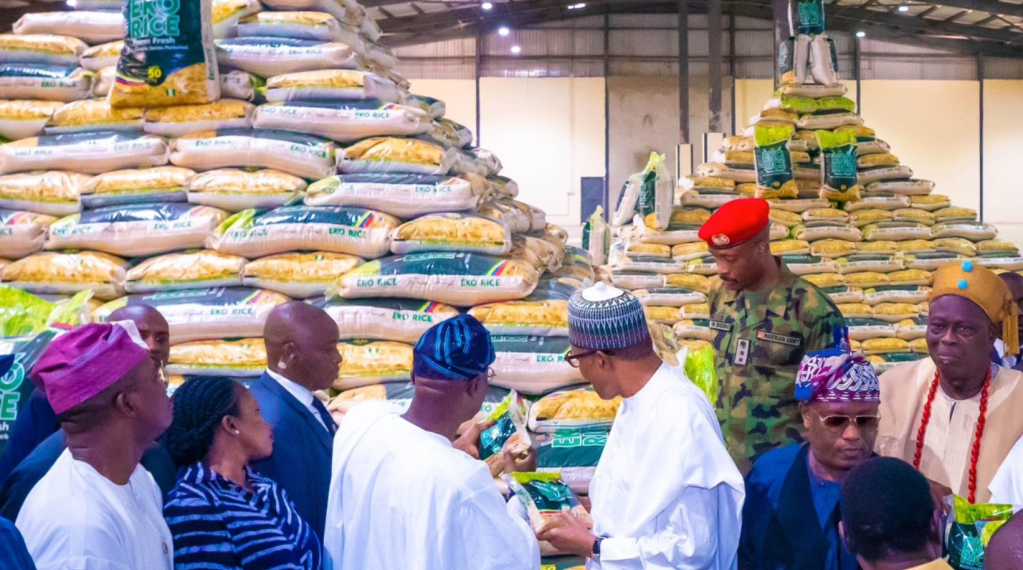🌿 Ruzu Non-Alcoholic Herbal Bitters
Ruzu Non-Alcoholic Herbal Bitters is a natural health supplement specially formulated to:
- ✅ Promote general wellness
- ✅ Detoxify the body
- ✅ Support the treatment of various ailments
Made from a powerful blend of 100% organic and medicinal herbs, Ruzu is completely alcohol-free, making it ideal for:
- 👪 All age groups
- 🌱 Health-conscious individuals
- 🌿 Anyone seeking non-alcoholic herbal remedies
Whether you're looking to boost your vitality, cleanse your system, or support healing the natural way, Ruzu Bitters offers a trusted herbal solution.
Ten things you need to know about the Imota Rice Mill
By Naomisophyblog
President, Muhammadu Buhari recently commissioned 32-metric tonnes per hour Lagos Rice Mill located in Imota, Ikorodu, a suburb of Lagos.
According to Governor Babajide Sanwo-Olu, the Rice mill is part of Buhari’s agricultural revolution aimed at localizing the production of rice. The governor also stated that the development is part of an effort by Lagos state to support the rice and food revolution in Nigeria.
In addition, the mill is said to hold some benefits, part of which is to contribute immensely to the economy of Lagos state, and Nigeria.
This is not the first exercise by the administration to facilitate rice production in the country. Buhari’s administration has always harped on the local production of rice as the solution to growing Nigeria’s economy through the creation of job opportunities and also improving the GDP of the country.
His policies coerced Nigerians to produce rice locally instead of relying on imported ones. the president was even quoted saying Nigerians should farm what they eat or die hungry in TV programmes.
His effort saw the opening of a mega rice pyramid in Abuja about a year ago. The project was a 1.2 million-bag paddy rice pyramid through which the massive rice production was achieved by the Rice Farmers Association of Nigeria, RIFAN, under the Central Bank of Nigeria, CBN’s Anchor Borrowers’ Programme.
Meanwhile, the newly inaugurated rice mill in Ikorodu, Lagos has a capacity of 2.8 million bags of 50kg bags of rice yearly and is expected to generate thousands of jobs for Nigerian citizens.
In addition, the highly anticipated mill has interesting features which make it the largest on the continent.
Here are 10 things you need to know about Imota rice mills
Size: while the rice mill is 22 hectares big, the mill itself occupies 8.5 hectares and the rest of the land is to be used for an industrial park. It is regarded as the largest mill in Africa and the third-largest mill in the world
Capacity: The rice mill can produce 2.8 million bags of 50kg bags of rice yearly.
Job creation: Sanwo-Olu said the facility will create 1,500 direct jobs and 254,000 indirect jobs for citizens.
Operations: It is an integrated mill with two warehouses and 16 silos, each with a capacity of 2,500 tonnes, 25 metres high and a 40-year life. Its operation is divided into two lines receive, pre-clean, boil, dry, sort, hull, polish and bag the rice.
Prospect: The full production of the facility is expected to drastically reduce the prices of rice and pressure to purchase the commodity. Also, processing the national staple food rice in its own country is expected to improve Nigeria’s trade balance.
Equipment: The machines are from Buhler, a Swiss company that is one of the world’s leading manufacturers of rice processing technologies. While the plant is fully automated, the rice is not touched until it is packed into bags.
Partnership: To meet the paddy requirement of the mill and facilitate a seamless supply of input for the facility, Lagos will undertake a backward integration strategy in the form of collaboration with other Nigerian states such as Kwara, Sokoto, Benue and Kebbi.
Trademark: The rice from the Imota rice mill will operate under the trademark of Eko rice.
Management: Last year, the Lagos State Government signed an agreement with WACOT Rice Limited, a subsidiary of TGI Group to manage the rice mill. Its experience and expertise are expected to bring about improvements in quality, capacity, packaging, and general rice production to meet the state’s increasing demands.
Assembly: Only local staff were used for the assembly of the Rice Mill
Source:Nairametrics

















